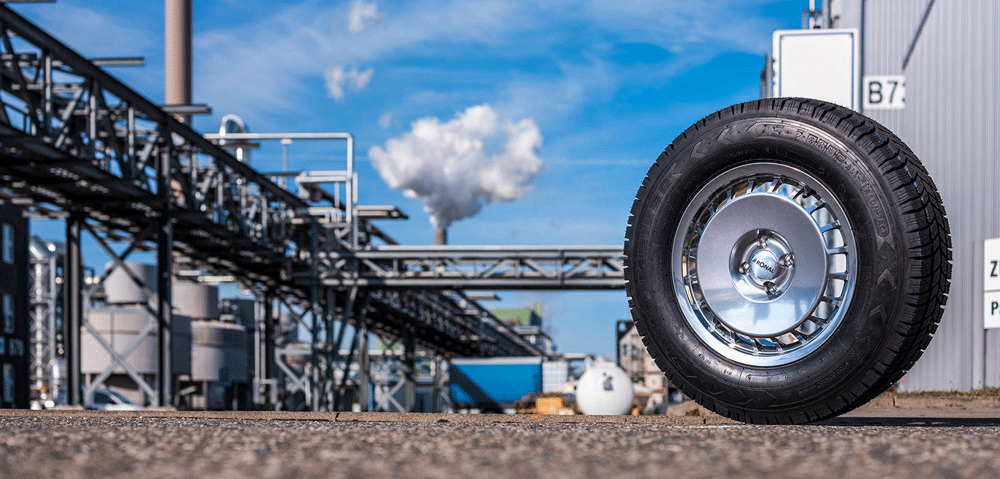Researchers have succeeded in formulating a new synthetic rubber that is said to be 50% less abrasive than natural rubber
Synthetic rubber has not yet been able to match the abrasion behavior of natural rubber, and as such, has been rendered unsuitable for truck tires, which demand high levels of durability.
A new type of synthetic rubber has been developed by researchers at the Fraunhof
Researchers at the Fraunhofer Institute for Applied Polymer Research IAP, for Microstructure of Materials and Systems IMWS, for Molecular Biology and Applied Ecology IME, for Mechanics of Materials IWM, and for Silicate Research ISC, have been able to optimize the characteristics of synthetic rubber.
“Our synthetic rubber BISYKA – that’s a German abbreviation for ‘biomimetic synthetic rubber’ – has superior characteristics compared with natural rubber,” said Dr Ulrich Wendler, who is heading up the project at the Fraunhofer pilot plant center for Polymer Synthesis and Processing PAZ in Schkopau.
Scientists investigated rubber from dandelions. Like rubber from trees, 95% of dandelion rubber consists of polyisoprene, while the remaining percentage is made up of organic components such as proteins or lipids. The advantage of dandelion rubber over tree rubber is that it has a generation succession of just three months as opposed to seven years for the latter. That makes dandelion rubber an ideal starting point for investigating the influence of organic components on the rubber characteristics.
Researchers eliminated the key organic components systematically. After they had identified the organic components that were important for abrasion behavior, researchers at Fraunhofer IAP synthesized the BISYKA rubber out of functionalized polyisoprene with high micro-structural purity and the respective biomolecules. Their colleagues at Fraunhofer IWM and IMWS then investigated the characteristics of the rubber variants obtained.
To do this, they used extensional crystallization: if you stretch natural rubber to three times its length, crystalline regions form and the rubber hardens. “The extensional crystallization of BISYKA rubber equals that of natural rubber,” explained Wendler.
When making truck tires, the rubber is usually mixed with carbon black. Increasingly, however, manufacturers are adding silicates to the mixture instead. This is where the expertise of Fraunhofer ISC came in: at the institute, scientists investigate new kinds of silica fillers.
“Tires made of the synthetic rubber lost 30% less mass than the tires made of natural rubber. On top of that, the synthetic tires showed only half the tread loss.
“Furthermore, the synthetic rubber can be produced on an industrial scale using existing plants and equipment. This means that it offers an excellent alternative to natural rubber – including for high-performance truck tires.”
Prüflabor Nord then conducted a series of tests to analyze if the BISYKA rubber would do what its extensional crystallization promised. Four car tires with a tread made from BISYKA were driven on 700 circuits in one direction and then 700 circuits in the opposite direction on a real vehicle, and the results compared with those for natural rubber.
While the natural rubber tire was 850g lighter after the test and lost 0.94mm of tread, the BISYKA tire lost merely 600g and 0.47mm of tread. The rolling resistance of the synthetic rubber was also better: the natural rubber tire achieved a score of C on the EU tire label, and the BISYKA tire achieved a B.
“So far, we have only carried out initial tests with the BISYKA tire blend, but the results are extremely promising. As the next step, we want to further optimize the BISYKA rubber. This concerns, above all, the proportion and the composition of the organic components. At the same time, we will adapt the formula of the tread compound for truck tires to the new rubber,” concluded Wendler.
The team are currently seeking potential partners to commercialize the new synthetic rubber.



